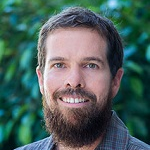Coastal Morphodynamics and Geomorphology
A special issue of Geosciences (ISSN 2076-3263).
Deadline for manuscript submissions: closed (31 July 2020) | Viewed by 4813
Special Issue Editors
Interests: coastal morphodynamics; coastal modelling; surf zone; hydrodynamics; coastal geomorphology
Special Issues, Collections and Topics in MDPI journals
Interests: coastal; structure-from-motion; drones
Special Issues, Collections and Topics in MDPI journals
Special Issue Information
Dear Colleagues,
This Special Issue of Geosciences aims to gather high-quality original research articles in the field of coastal morphodynamics and geomorphology.
Significant advances in monitoring and modelling of coastal systems occurred over the last few decades. This was driven by the expanded use of numerical computer modelling, in situ and laboratory observations of coastal processes and remote sensing technologies. It also coincided with a rapid increase in coastal population and expanded awareness of future climate change driven impacts on coastal systems and populations.
As we begin a new decade, we seek articles that aim to expand our current understanding of coastal morphodynamics, especially in areas where substantial scientific challenges remain. These include advancing our understanding of extreme events on the coast and forecasting the morphodynamic evolution of coastal systems on scales relevant to planning and management
Therefore, I invite you to submit articles with respect to the above and/or the following topics:
- Coastal change under extreme conditions;
- Novel techniques in coastal monitoring and modelling;
- Long-term morphodynamic evolution of coastal systems;
- Sediment budgets in coastal systems;
- Human interaction with the coast;
- Remote sensing of coastal systems;
- Application of morphodynamics models in the field;
- In situ or laboratory hydrodynamic monitoring and modelling of the coast.
Articles may focus on any coastal systems, such as beaches, estuaries, deltas, wetlands and coral reefs.
Dr. Daniel L. Harris
Dr. Javier Leon
Dr. Sarah McSweeney
Guest Editors
Manuscript Submission Information
Manuscripts should be submitted online at www.mdpi.com by registering and logging in to this website. Once you are registered, click here to go to the submission form. Manuscripts can be submitted until the deadline. All submissions that pass pre-check are peer-reviewed. Accepted papers will be published continuously in the journal (as soon as accepted) and will be listed together on the special issue website. Research articles, review articles as well as short communications are invited. For planned papers, a title and short abstract (about 100 words) can be sent to the Editorial Office for announcement on this website.
Submitted manuscripts should not have been published previously, nor be under consideration for publication elsewhere (except conference proceedings papers). All manuscripts are thoroughly refereed through a single-blind peer-review process. A guide for authors and other relevant information for submission of manuscripts is available on the Instructions for Authors page. Geosciences is an international peer-reviewed open access monthly journal published by MDPI.
Please visit the Instructions for Authors page before submitting a manuscript. The Article Processing Charge (APC) for publication in this open access journal is 1800 CHF (Swiss Francs). Submitted papers should be well formatted and use good English. Authors may use MDPI's English editing service prior to publication or during author revisions.
Keywords
- Coastal morphodynamics
- Coastal geomorphology
- Extreme events
- Hydrodynamics
- Computer modelling
- Remote sensing
- Coastal management
- Environmental monitoring







